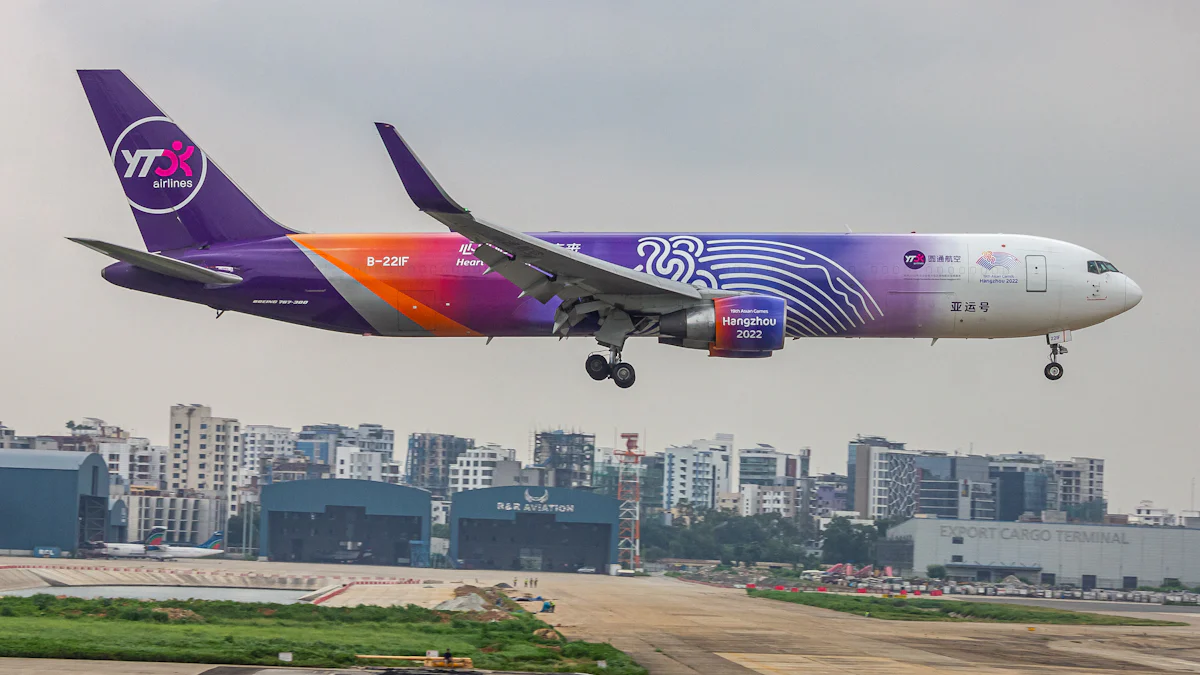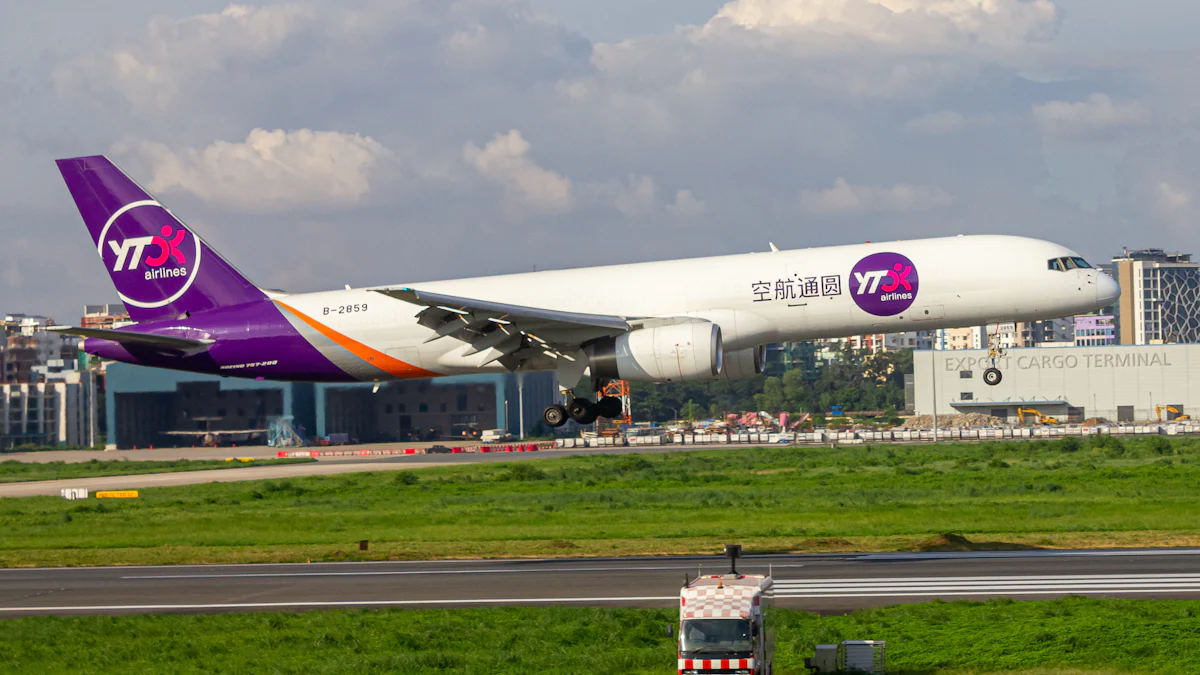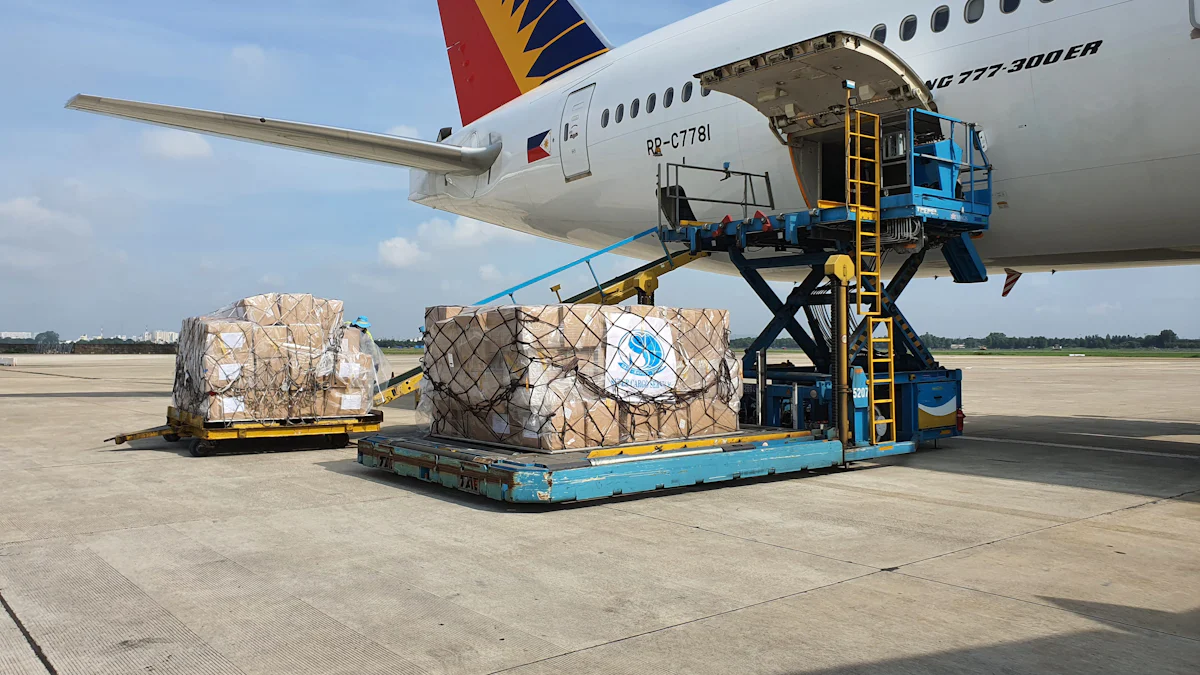Vietnam's Air Freight Surge: Trends for 2025

By 2025, air freight in Vietnam is set to experience significant growth. The anticipated market trends suggest robust expansion, fueled by rising demand and technological advancements. Understanding these trends is essential for stakeholders and investors as they navigate the evolving landscape. Air freight in Vietnam in 2025 will be pivotal to the country's logistics sector, significantly contributing to economic growth. With a projected growth rate of 6.10% CAGR, the industry presents immense potential for recovery and expansion, making it an attractive prospect for investment.
Current Trends in the Vietnamese Air Freight Industry
Recovery from the Pandemic
Impact on air freight operations
Vietnam's air freight industry has shown remarkable resilience in recovering from the pandemic. The sector has become a focal point for large-scale investments, indicating its strong potential for growth. As the industry rebounds, it plays a crucial role in the nation's economic landscape, serving as a vital lifeline for international trade and commerce. The increase in the number of flights and the entry of new companies into the domestic air freight sector highlight the industry's recovery trajectory. However, infrastructure and logistic services still struggle to meet the current demand, leading to soaring logistic costs.
Technological advancements aiding recovery
Technological advancements have significantly aided the recovery of air freight operations in Vietnam. The adoption of initiatives like the ONE Record Initiative aims to enhance transparency and efficiency within the industry. These advancements facilitate better coordination and management of air cargo, ensuring smoother operations. As the industry embraces digital solutions, it positions itself for sustained growth and improved service delivery. The integration of technology not only supports recovery but also sets the stage for future developments in air freight in Vietnam in 2025.
Technological Advancements
Automation and digitalization in air freight
Automation and digitalization have become integral to the current trends in the Vietnamese air freight industry. These technologies streamline processes, reduce manual intervention, and enhance operational efficiency. Automation in air cargo handling and processing ensures faster turnaround times and minimizes errors. Digital platforms enable real-time tracking and monitoring, providing stakeholders with valuable insights into the movement of goods. As the industry continues to evolve, automation and digitalization will play a pivotal role in shaping its future.
Role of AI and data analytics
Artificial Intelligence (AI) and data analytics are transforming the air freight industry in Vietnam. AI-driven solutions offer predictive capabilities, enabling better demand forecasting and resource allocation. Data analytics provides actionable insights, helping companies optimize their operations and improve decision-making. By leveraging AI and data analytics, the industry can enhance its competitiveness and adapt to changing market trends. These technologies empower businesses to navigate the complexities of airfreight and capitalize on emerging opportunities.
Economic and Geopolitical Influences on the Air Freight Market
Economic Conditions
Vietnam's economic growth and its impact on air freight
Vietnam's economy has been on a robust growth trajectory, significantly impacting the air freight market. The country's GDP growth, driven by industrialization and increased exports, has led to a surge in demand for air cargo services. As Vietnam continues to expand its manufacturing sector, the need for efficient and reliable air freight solutions becomes more pronounced. This economic growth not only boosts the volume of goods transported but also enhances the overall competitiveness of the air freight industry. The anticipated growth in air freight in Vietnam in 2025 reflects the country's strategic position as a key player in global trade.
Regional economic variances
Regional economic differences within Vietnam also play a crucial role in shaping the air freight market. The northern regions, with their proximity to China, have seen rapid industrial development, leading to increased air cargo volumes. In contrast, the southern regions, known for their agricultural exports, contribute differently to the air freight industry. These regional variances necessitate tailored logistics solutions to meet diverse demands. Understanding these economic disparities allows stakeholders to optimize their operations and capitalize on emerging opportunities in different parts of the country.
Geopolitical Factors
Trade agreements and partnerships
Vietnam's participation in various trade agreements has significantly influenced the air freight market. Agreements like the Comprehensive and Progressive Agreement for Trans-Pacific Partnership (CPTPP) and the ASEAN Open Skies initiative have facilitated smoother trade flows and increased air cargo volumes. These partnerships enhance Vietnam's connectivity with global markets, making it an attractive destination for international businesses. The strategic alignment with key trading partners ensures a steady flow of goods, further strengthening the air freight industry's position in the global supply chain.
Political stability and regulatory environment
Political stability in Vietnam provides a conducive environment for the growth of the air freight industry. A stable government ensures consistent policies and regulations, fostering investor confidence and encouraging foreign investments. The regulatory framework, while complex, aims to streamline operations and enhance efficiency in the air freight market. By navigating these regulations effectively, businesses can leverage Vietnam's strategic location and robust infrastructure to expand their reach. The combination of political stability and a supportive regulatory environment positions Vietnam as a pivotal hub for air freight operations in the region.
Impact of E-commerce Growth on Airfreight

Rise of E-commerce in Vietnam
Increased demand for air freight services
Vietnam's e-commerce sector has experienced rapid expansion, significantly impacting the air freight industry. The surge in online shopping has led to a notable increase in airfreight demand. Consumers now expect faster delivery times, prompting businesses to rely more heavily on airfreight to meet these expectations. This shift has resulted in a substantial rise in airfreight volumes, both domestically and internationally. The air freight industry in Vietnam has adapted to this growing demand by enhancing its capacity and efficiency, ensuring timely delivery of goods.
Changes in consumer behavior
The rise of e-commerce has also brought about changes in consumer behavior. Shoppers increasingly prefer online platforms for their purchases, valuing convenience and speed. This trend has driven the need for efficient logistics solutions, with airfreight playing a crucial role in meeting consumer expectations. As consumers continue to prioritize quick delivery, the air freight industry must innovate and adapt to maintain its competitive edge. The evolving consumer landscape presents both challenges and opportunities for air freight in Vietnam in 2025.
Logistics and Supply Chain Adjustments
Innovations in logistics to meet e-commerce demands
To address the challenges posed by e-commerce growth, the air freight industry has embraced various innovations in logistics. Companies have implemented advanced technologies to streamline operations and enhance efficiency. Automation and digitalization have become integral components of the logistics process, reducing manual intervention and improving accuracy. These innovations enable the industry to handle increased airfreight volumes effectively, ensuring that goods reach their destinations promptly.
Role of air freight in fast delivery expectations
Air freight plays a pivotal role in meeting the fast delivery expectations of e-commerce consumers. The industry's ability to transport goods quickly and efficiently makes it an essential component of the supply chain. As e-commerce continues to grow, the demand for airfreight services will likely increase, further solidifying its importance in the logistics landscape. By leveraging its strengths, the air freight industry can capitalize on the opportunities presented by e-commerce growth and maintain its position as a key player in global trade.
Infrastructure Developments and Investment Opportunities

Infrastructure Enhancements
Expansion of airports and cargo facilities
Vietnam's air freight industry is poised for significant growth, driven by substantial infrastructure enhancements. The government has embarked on an ambitious plan to expand airports and cargo facilities across the country. This expansion aims to increase air cargo capacity, accommodating the rising demand for airfreight services. New international airports and the modernization of existing ones form a crucial part of this strategy. These developments will not only boost the efficiency of air cargo operations but also enhance Vietnam's connectivity with global markets.
Government initiatives and funding
The Vietnamese government plays a pivotal role in supporting the air freight industry's growth through various initiatives and funding programs. The national plan for transport systems focuses on increasing transport connectivity and reducing logistic costs. By investing in infrastructure, the government aims to improve the competitiveness of Vietnam's goods in the global market. Funding sources include public-private partnerships and international investments, ensuring the successful implementation of these projects. These efforts underscore the government's commitment to transforming Vietnam into a key player in the global air freight landscape by 2025.
Opportunities for Foreign Investment
Attractive sectors for investors
Vietnam's air freight industry presents numerous development potential and opportunities for foreign investors. The expansion of airports and cargo facilities opens up attractive sectors for investment, including logistics, technology, and infrastructure development. Investors can capitalize on the growing demand for efficient air cargo solutions, driven by the rise of e-commerce and increased international trade. The country's strategic location in Southeast Asia further enhances its appeal as a hub for airfreight operations, offering investors a gateway to regional and global markets.
Incentives and policies for foreign businesses
To attract foreign investment, Vietnam has implemented favorable incentives and policies. Legislative changes in the aviation sector create a more conducive environment for foreign businesses. These policies include tax incentives, streamlined regulatory processes, and support for joint ventures. By fostering a business-friendly climate, Vietnam encourages foreign companies to invest in its air freight industry. This approach not only boosts the country's economic growth but also strengthens its position as a competitive player in the global air cargo market.
Challenges and Strategic Recommendations for Air Freight in Vietnam in 2025
Infrastructure Constraints
Current limitations and bottlenecks
Vietnam's air freight industry faces significant infrastructure challenges. Experts highlight that the existing infrastructure and logistic services struggle to meet the current demand. This inadequacy leads to increased logistic costs, which hinder the industry's growth. The limited capacity of airports and cargo facilities results in congestion and delays, affecting the efficiency of air cargo operations. Additionally, the lack of advanced technology and equipment further exacerbates these issues, making it difficult for the industry to keep pace with rising demands.
Strategies to overcome infrastructure challenges
To address these infrastructure constraints, Vietnam must implement strategic measures. First, expanding airport and cargo facility capacity is crucial. This expansion will alleviate congestion and improve the flow of air cargo. Second, investing in modern technology and equipment can enhance operational efficiency. Automation and digitalization should be prioritized to streamline processes and reduce manual intervention. Third, fostering public-private partnerships can attract investments and facilitate infrastructure development. By adopting these strategies, Vietnam can overcome its infrastructure challenges and position itself as a competitive player in the global airfreight market.
Regulatory Barriers
Navigating complex regulations
Navigating the complex regulatory environment poses another challenge for Vietnam's air freight industry. The regulatory framework, while designed to ensure safety and efficiency, often complicates operations. Businesses must comply with various regulations, which can lead to delays and increased costs. The lack of harmonization between domestic and international regulations further complicates matters, creating barriers to seamless air cargo operations.
Recommendations for policy improvements
To improve the regulatory landscape, Vietnam should consider several policy recommendations. Simplifying and harmonizing regulations can reduce operational complexities and enhance efficiency. Streamlining customs procedures and adopting international standards will facilitate smoother air cargo flows. Additionally, providing training and support to businesses can help them navigate the regulatory environment more effectively. By implementing these policy improvements, Vietnam can create a more conducive environment for the air freight industry, fostering growth and attracting foreign investment.
Vietnam's air freight industry is poised for significant growth by 2025, driven by technological advancements, economic expansion, and increased e-commerce demand. Key trends include automation, digitalization, and strategic trade partnerships. These developments enhance operational efficiency and global connectivity.
To capitalize on these opportunities, stakeholders should:
Leverage Technological Innovations: Embrace AI and data analytics to optimize operations.
Invest in Infrastructure: Expand airport capacities and modernize facilities.
Navigate Regulatory Landscapes: Simplify compliance processes to reduce barriers.
Understanding the competitive landscape through Porter's five forces analysis can further aid stakeholders in gaining a competitive edge.
See Also
Exploring Five Key Trends for Supply Chain Efficiency
Understanding Current Trends in Logistics Risk Management
Discovering Innovations in Sea Freight Logistics for 2024
